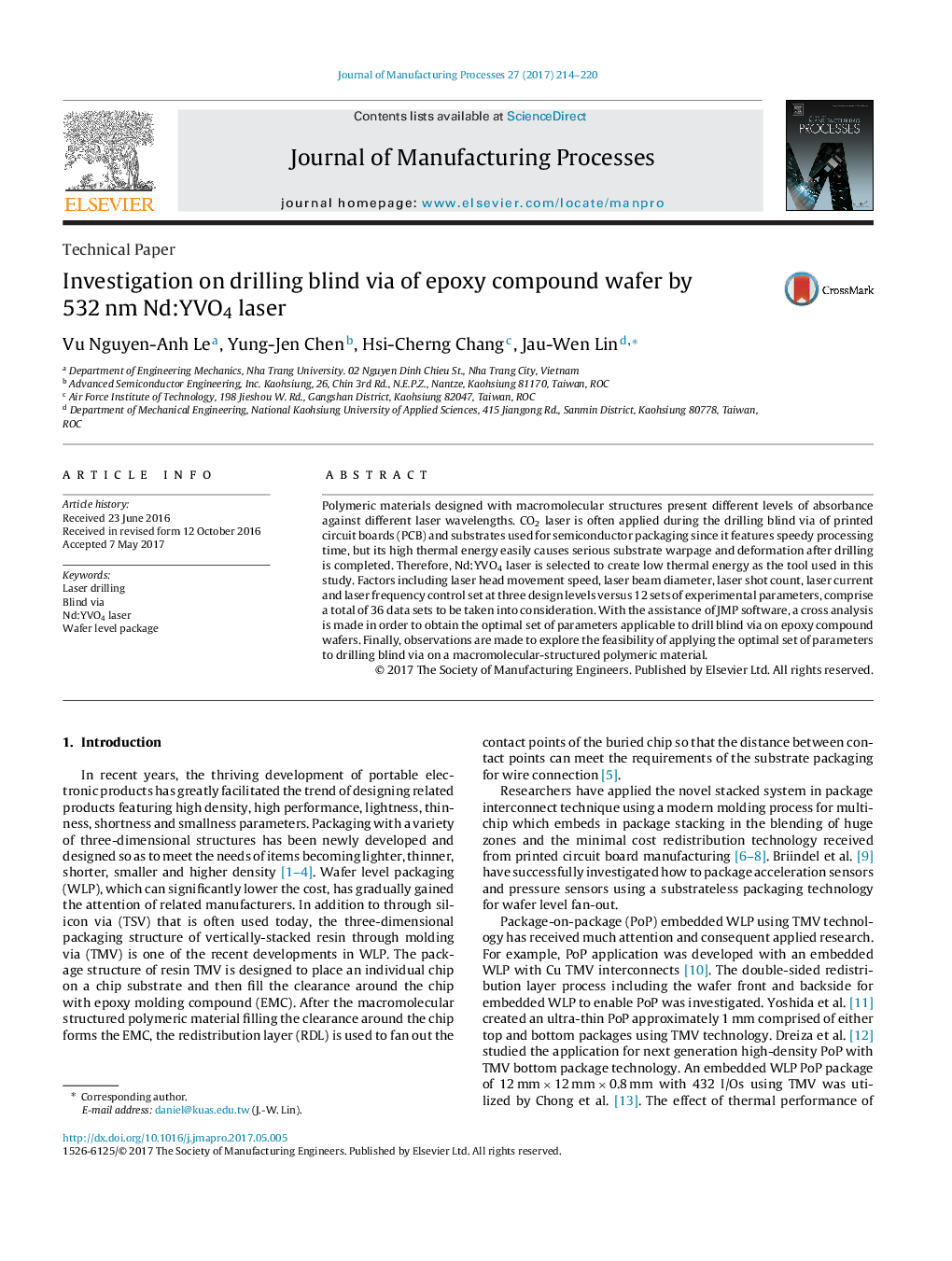| Article ID | Journal | Published Year | Pages | File Type |
|---|---|---|---|---|
| 5469427 | Journal of Manufacturing Processes | 2017 | 7 Pages |
Abstract
Polymeric materials designed with macromolecular structures present different levels of absorbance against different laser wavelengths. CO2 laser is often applied during the drilling blind via of printed circuit boards (PCB) and substrates used for semiconductor packaging since it features speedy processing time, but its high thermal energy easily causes serious substrate warpage and deformation after drilling is completed. Therefore, Nd:YVO4 laser is selected to create low thermal energy as the tool used in this study. Factors including laser head movement speed, laser beam diameter, laser shot count, laser current and laser frequency control set at three design levels versus 12 sets of experimental parameters, comprise a total of 36 data sets to be taken into consideration. With the assistance of JMP software, a cross analysis is made in order to obtain the optimal set of parameters applicable to drill blind via on epoxy compound wafers. Finally, observations are made to explore the feasibility of applying the optimal set of parameters to drilling blind via on a macromolecular-structured polymeric material.
Keywords
Related Topics
Physical Sciences and Engineering
Engineering
Industrial and Manufacturing Engineering
Authors
Vu Nguyen-Anh Le, Yung-Jen Chen, Hsi-Cherng Chang, Jau-Wen Lin,
